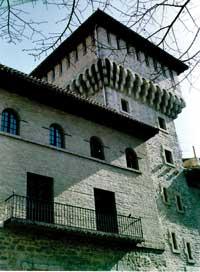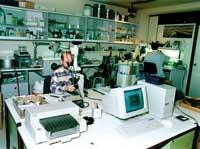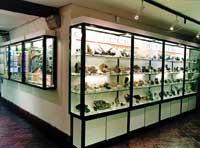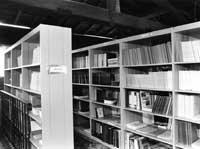Vitoria-Gasteiz Museum of Natural Sciences

Under the auspices of the Council of Culture of the Province of Alava, the Museum of Natural Sciences was established in May 1986. The collections of the then Natural History were not new, since the association AEPNA (Asociación de Investigación y Conservación de la Naturaleza de Álava) had carried out a ten-year work in 1984. That year the Alava Provincial Council offered the building of Otxanda, with the aim of giving a respite to the association and build a museum. In 1985 the first permanent exhibition was held and the following year the doors were opened to the nearby public.
Soon after, the AEPNA association became the Alava Institute of Nature and people of great scientific weight joined around it. Two years after the inauguration of the Museum the structure of the Council of Culture of the Provincial Council disappeared. Consequently, the funding and operation of the museum was restructured in order to act in other ways. The year 1988 was an important year for the museum, since the Alava Institute of Nature was left out as an association and the museum began to function as an autonomous entity. The dynamics changed radically at that time, because from there he had to resort to own budgets, among others.
In the following years there was a depression in the museum and the number of visitors was reduced. The most important problem of that time, according to Jesus Alonso, was the lack of professional and qualified personnel (cleaning, documentation, exhibitions, heritage conservation...). Alonso began to deal with the museum in late 1988 by management, and currently continues to play a similar role, and current and current problems are similar.

In 1993 temporary exhibitions began at the museum and the number of visitors has been growing. Natural Cultural Associations receive research grants, and the work of some of them is an important contribution to the museum. The Alava Institute of Nature continues its contributions. But director Alonso recognizes that, above all, thanks to the work of a dozen brave scientists, large collections are being formed: “Despite the scarcity of grants, the museum has gone ahead and the work done is a pride.”
In 1996 all visitor records were broken: 28,085 people visited last year and this year is expected to break this brand. It should be noted that in recent years the visits of individuals are more numerous than those of groups of students.
Research centre on exhibition halls

The overview of museums is limited to the exhibition halls. In this case, on the contrary, it is more convenient to study this museum as a research center, since most of the work done goes that way.
The Natural Sciences Museum of Alava deals especially with the ecosystems of the Basque Country and the neighboring territories, but also catalogues of brioflora, entomofauna and mollusks of African tropical forests have been compiled. Thanks to constant work, the collections grow and increase the knowledge of each of the different areas. To facilitate and complete this objective, an exchange of funds and documents is carried out with universities, foundations and museum entities from all over the world.

The exchange is therefore total with the most prestigious scientists in the world. In total there are 750 scientific journals that arrive at the museum, while a large library is being formed
The main areas investigated are geology, botany and zoology. In the exhibition there are only 2,000 specimens, but the number of records documented by the researchers is enormous: in the herbarium there are 75,000 leaves registered within the botanical fanerogamic and another 25,000 records in botanical cryptogrammar (mosses and hepatic herbs); in zoology 160.085 in invertebrates and 100,000 in archaeology; as for geology, inventory of paleanontology and fields are necessary.

In addition, the museum annually discharges a dozen new species. According to Jesús Alonso, this figure can be multiplied by four considering money and rhythm. It should be noted that all the collections are being computerized and will shortly be in the data banks of the Basque Palace.
In the exhibition you can not see all this, but anyone who enters the Tower of Otxanda of Vitoria-Gasteiz can enjoy the biodiversity and ecosystem of the Basque Country: the rock and mineral collections show us the geological past of the Cantabrian, the most complete paleontological collection of the Basque Country, the evolution of our territory in the last 150 million years, the vertebrate tournaments.

From larger dinosaurs to smaller insects trapped in amber, almost all appear in the museum rooms. The exhibition includes two freshwater ecosystems outside our municipality: The Amazon and the great African lakes.
The documentary and scientific value of each piece is very great. All together form a puzzle of knowledge that is an excellent tool to understand the past and present of nature. Undoubtedly, this public center is an important reference in the field of Natural Sciences in the Basque Country.
schedule Monday closed Tuesday to Saturday: Sundays and holidays: Address |





